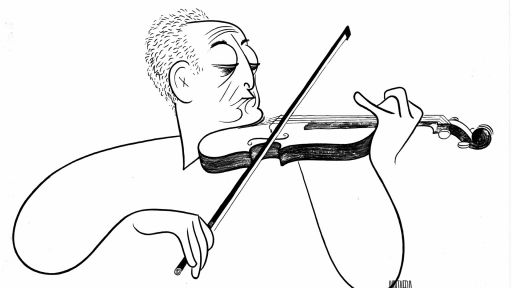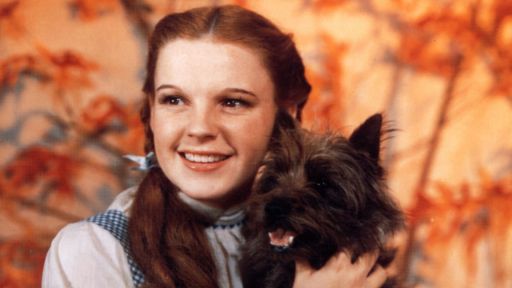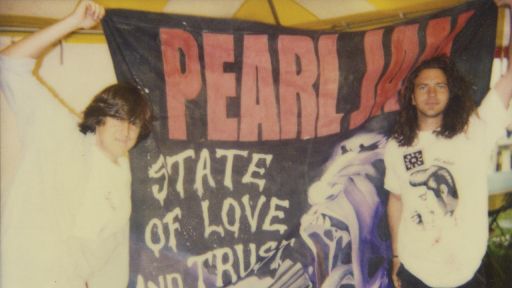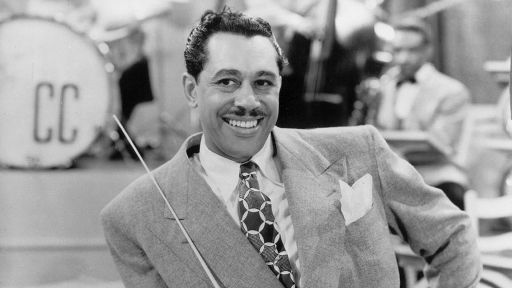Muddy Waters is, in many ways, the archetypal bluesman. He was raised as a sharecropper in the Mississippi Delta, where he learned to play an acoustic guitar. He went to Chicago in 1943, and the band he assembled established the electric blues sound. Over the next three and a half-decades, his band became a springboard for many of his sidemen, launching a prominent school of blues performers.
Early Years
Muddy Waters was born McKinley A. Morganfield on April 4, 1913 at a small enclave in Issaquena County, Mississippi known as Jug’s Corner. The nearest town on the map, where the family went for commerce and mail, was in neighboring Sharkey county, a small place called Rolling Fork that was on the train tracks. Muddy usually cited Rolling Fork as his home. The area, near the Mississippi River, was wet, and his grandmother nicknamed him because of the mud puddles in which he played.
Muddy’s mother died when he was very young, and her mother raised him. She moved north to the Stovall Plantation outside of Clarksdale before Muddy was three years old. He stayed there, for the most part, until he was thirty years old. Muddy had cousins in the area, including Eddie Boyd, who would later have hits in Chicago.
Around five years old, Muddy started playing music on a harmonica. He beat on a kerosene can, then squeezed an old accordion around his grandmother’s house, and fooled with the limited sounds of a jew’s harp. The guitar was popular, and he bought his first around 1930. Muddy always had a strong voice, and a regional string band, the Son Sims Four, enlisted him as a vocalist. Sims, a multi-instrumentalist, gave Muddy some guitar instruction. However, seeing Son House perform set a fire under Muddy. House played with a bottleneck slide, and Muddy began learning the style.
From an early age, Muddy hustled to earn extra money. Sharecroppers earned a subsistence wage at best (though conditions at Stovall were better than on many other farms), and Muddy collected bottles for the bootlegger as a kid; later he ran his own whiskey, trapped furs, and when he learned to make music, he performed for tips and hosted house parties. Another sideline indicates Muddy’s willingness to embrace technology. At a time when horses were as fast as cars, and as dependable, Muddy bought a 1934 V8 Ford. He earned extra money driving neighbors to and from towns, but more than anything, the car’s importance is indicative of a mind open to change. In a few years, he would effect a musical revolution.
First Recordings
Muddy’s first recordings came about through his growing reputation as a musician. As he’d become more accomplished, he traveled with the Son Sims group, including a performance in nearby Farrell when the Silas Green traveling tent show came through (contrary to myth, he did not travel with the show). In August of 1941, two field recordists showed up in Coahoma County, where Clarksdale and Stovall are, on a mission to research the role music played in African-American daily life. The project had begun with John Work III, an African-American musicologist at Fisk University; in his appeal for funds, he encountered Alan Lomax at the Library of Congress. When asking about talented musicians in the area–they were seeking someone in the style of Robert Johnson–they were repeatedly referred to Muddy Waters at Stovall.
When Muddy heard a white man was looking for him, he assumed it was a revenue agent there to bust his whiskey still. Only after Lomax drank water out of the same cup Muddy drank out of did the bluesman trust him. The recording equipment was set up at Muddy’s cabin, and among the sides he cut that day were “Can’t Be Satisfied” and “Feel Like Going Home,” which were soon issued by the Library of Congress as part of a folk music collection.
It may have been the confidence gained by this session that inspired Muddy to travel to St. Louis within the year. Chicago seemed too far away, and St. Louis proved too intimidating; he returned to Stovall. The Fisk-Library of Congress trip returned in July of 1942, and Muddy recorded several more sides for them, some alone and some with the Son Sims group.
Chicago
In the summer of 1943, after a fight with the plantation overseer, Muddy left the south for Chicago. He had friends and family there, and he got a factory job the day after he arrived. He never sought any real jobs in Chicago, devoting himself instead to developing his musical reputation by performing at house parties. His reputation grew quickly; by 1944, he was meeting established musicians like Big Bill Broonzy, Memphis Slim, and Tampa Red. Muddy’s uncle, who preceded him to Chicago, gave him an electric guitar soon after he arrived. The acoustic guitar had been fine in rural Mississippi where the only sounds at night were the shallow breathing of God at rest, and the steady percussion of crickets and cicadas. In Chicago there were the clanging streetcars, trains, and automobiles out late on a party. Muddy took to the new instrument, even incorporating thumbpicks into his style to further increase the volume.
By 1946, Muddy had come to the attention of record producers. He cut one side for J. Mayo Williams, an African-American independent producer. The side was “Mean Red Spider,” and it was released with someone else’s name on the label. He also recorded for Lester Melrose, a publishing giant and talent scout for Columbia and RCA (which controlled Bluebird, the popular blues label). Muddy’s three tracks were for Columbia, and remained unreleased for decades.
His next session was for Aristocrat Records, owned in part by Leonard Chess. This session, though not particularly successful, inaugurated a relationship that would continue past Leonard’s death, into the early 1970s when Chess, as Aristocrat became known, had undergone two ownership changes. At the third session with Leonard, as they were preparing to wrap up, Muddy asked if he could do one his way–which meant without the piano. Leonard obliged and Muddy reprised “Can’t Be Satisfied” and “Feel Like Going Home,” though on the electric guitar, and with the rhythm of city life. The songs had a new feeling. The single sold out its first weekend and Muddy Waters had his first taste of stardom.
As early as 1946, Muddy had met Jimmy Rogers, who would become his guitarist, and Little Walter, his harmonica player. The trio developed the urban blues sound, and became popular in the clubs. Calling themselves the Headhunters, they’d rove the South Side on their off nights, sitting in on peoples’ gigs, winning new fans. They enlisted Baby Face Leroy Foster on drums, but the group didn’t have the opportunity to record together until 1950. By then, Muddy had further built his reputation with songs like “Train Fare Home” and “Screamin’ and Cryin’.” With his band, Muddy returned south in late 1949, triumphant, with their own show on KFFA; for many in the delta, it was the first time they saw an electric guitar.
In Chicago, however, Muddy’s sound was just what the large population of southern expatriates were awaiting. When Aristocrat became Chess Records in 1950, Muddy’s “Rollin’ Stone” was one of its first releases. (It later named a magazine and a band.) “Rollin’ Stone” is a song about power, about rootless — and ruthless — independence. Muddy doesn’t tell all. His pause asks us to fill the emptiness; it draws out our emotions, feelings, fears, compelling us to add meaning. Lyrically, most of Muddy’s songs were about sex — sex with someone else’s wife, someone else’s girlfriend, sex and trouble. But it was always a trouble he survived, a scrape he escaped. Sex was sex, but sex also became an analogy for a kind of freedom, a freedom to serve himself, to damn the torpedoes, the shift supervisor, and the overseer’s big gun. The sound of the songs reflected the newfound ebullience: Muddy, near the bottom of the socio-economic ladder, corralled the sense of post-war possibility and excitement. The have-nots were finally having — not having much, but even a little was a lot. The muscle of his electric guitar and the force of his ensemble sound and the fierce assertiveness of his voice unleashed the exuberance of a people. There was cause for celebration, and Muddy was the vehicle.
Burning up the Charts
Muddy’s classic band lineup was rounded out in 1951, with Elgin Evans replacing Foster on the drums, and by the addition of Otis Spann on piano. These five players defined the blues–and rock and roll–band template, and created many of the licks that are still emulated and repeated by bands around the world. The whole band didn’t get to record together until 1953; Leonard Chess was enjoying success with smaller combos and didn’t want to change a good thing. Between 1951 and 1956, Muddy had fourteen songs on the national charts, including “Still A Fool,” “Hoochie Coochie Man,” “Just Make Love To Me,” “I’m Ready,” and “Mannish Boy.”
When Check Berry came to Chicago in 1955, he asked Muddy Waters where he should record. Muddy directed him to Leonard Chess and, after hearing “Maybellene,” told Chess, who was hesitant, that he should release it. Chuck Berry’s success, and the new rock and roll sound, diminished the popularity of the blues. The national tours grew scarce for Muddy in the latter 1950s, and he mostly stayed in Chicago.
In 1958, when Muddy accepted an invitation to perform in England, he was unaware they were expecting him to play an acoustic guitar. One critic wrote that each time Muddy touched the knobs on his electric instrument, the volume got louder, forcing the critic further back in the audience until he was out the door. Those that left became the old school; the kids stayed, and many soon bought electric guitars and amps. Muddy returned two more times in the early 1960s, solidifying his role as an instigator of the British Invasion.
In the US, Muddy had a similarly electrifying effect on the white audiences through his 1960 performance at the Newport Jazz Festival. The budding love generation responded to his rock and rolling versions of “Got My Mojo Working” and “I Feel So Good,” and Muddy had a new audience. His work in the 1960s was marked by experimentation and manipulation, as Chess Records tried to broaden his audience. While many songs were successful, the album concepts were less so, especially the pairing of Muddy’s blues with a large horn section on Muddy, Brass, and Blues and the psychedelic blend, Electric Mud.
The beginning of the end of Chess Records occurred with the sale of the label in 1969, from the family to a corporation, followed by the sudden death of Leonard Chess. Muddy stayed with Chess, famously stating that he’d be with the label as long as a Chess was there. He recorded The Woodstock Album with members of the Band, produced by Band drummer Levon Helm. But when the label was sold again in 1975, Muddy terminated the nearly thirty-year relationship.
In 1976, Muddy made an album for the Blue Sky label, in association with CBS Records. The larger company gave him a boost, as did working with blues/rock star Johnny Winter as producer. The resulting album, Hard Again, won a Grammy and initiated a comeback for Muddy that lasted 6 more years, and had him opening arenas for Eric Clapton and jamming with the Rolling Stones. Muddy lived to record three more albums, the next two also winning Grammy awards. In addition to strong album sales, he settled a lawsuit with Arc Music, his publishing company, allowing him to live his final years in financial comfort.
Legacy
In Chicago, a stretch of 43rd Street has been renamed Muddy Waters Drive. He was inducted into the Rock and Roll Hall of Fame in 1987, and given the Record Academy’s Lifetime Achievement Award in 1992. A guitar has been made from a plank off his Stovall cabin, and the cabin itself has been dismantled, sent on a tour, and then placed in the Clarksdale Blues Museum.
Playing in Muddy’s band proved a springboard to a solo career for many of his sidemen. Both Jimmy Rogers and Little Walter became stars in the 1950s. Later, Otis Spann, James Cotton, Paul Oscher, Luther “Georgia Boy” “(Creepin’) Snake” Johnson, Luther “Guitar Jr.” Johnson, Jerry Portnoy, Bob Margolin, and Willie “Big Eyes” Smith, among others, enjoyed careers of their own.
Discography
-
* Waters, Muddy His Best 1947-1955 (MCA CHD-9370)
* Waters, Muddy His Best 1956-1964 (MCA CHD-9380)
* Waters, Muddy Hard Again (Blue Sky/Sony ZK 34449)
* Waters, Muddy Hoochie Coochie Man (Laserlight 17 101)
* Various Artists, The Aristocrat of the Blues (MCA CHD2 9387)
Further Reading
-
* Gordon, Robert. Can’t Be Satisfied: The Life and Times of Muddy Waters. New York: Little, Brown, 2002
* O’Neal, Jim, and Amy Van Singel. Voice of the Blues: Classic Interviews from Living Blues Magazine. Routledge Press, 2002.
* Rooney, James. Bossmen: Bill Monroe and Muddy Waters. New York: Dial, 1971. Reprint, New York: Da Capo Press, 1986.
* Tooze, Sandra. Muddy Waters: Mojo Man. Toronto: ECW Press, 1997.










